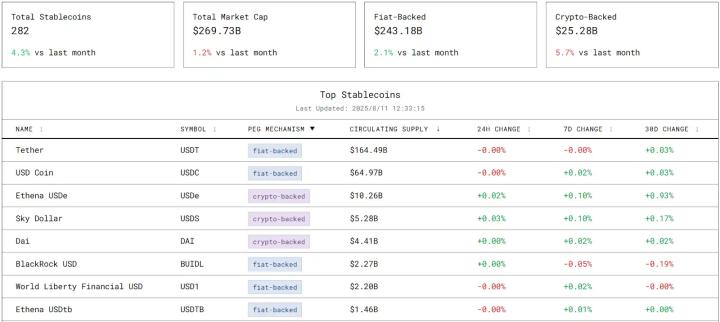Author: Thejaswini MA
Source: thetokendispatch
Translated by: Blockchain in Plain Language

A war is quietly unfolding in your pocket, and most people haven't even noticed.
Two major financial apps in the United States - Robinhood and Coinbase - are conducting completely opposite experiments on millions of users. Robinhood ranks 14th in the App Store's finance category, Coinbase ranks 20th, and both have a market value of around $80 billion. They both target young investors but believe the other's approach is entirely wrong.
Both experiments have been successful to some extent.
The Essence of Robinhood and Coinbase
These two companies are not traditional competitors but are conducting different experiments on the same subject (us).
Robinhood saw the pain points in finance and proposed: "What if we fix all the annoying parts?" They offer 15 cryptocurrencies, zero-commission trading, and an interface that allows buying Tesla stocks without a finance degree. Their philosophy is: you don't need to know how sausage is made to enjoy a hot dog.
Coinbase takes the opposite approach, asking: "What if we rebuild the entire financial system on blockchain technology?" Coinbase charges higher fees than Robinhood and other competitors but builds a platform for users wanting full access to the crypto ecosystem, offering over 260 cryptocurrencies. They bet that traditional finance will eventually move on-chain and hope to be the infrastructure for this transformation.
Coinbase CEO Brian Armstrong states: "In the next 5 to 10 years, our goal is to become the world's leading financial services app because we believe cryptocurrencies are consuming financial services, and we are the leading crypto company. All asset classes - money market funds, real estate, securities, debt - will move on-chain."
Both companies went public within months of each other in 2021, with a market value of $80 billion, targeting mobile-first young investors, but their products seem designed for different species.
This is not a battle for dominance but a race to serve different financial futures.
The Race to Expand Crypto Products
Both companies are accelerating the expansion of crypto products, but in entirely different ways.
Robinhood's recent announcement shows they are trying to directly surpass Coinbase. In June, they launched Robinhood Chain - their own Layer-2 network supporting Token-ized stocks, crypto trading, and future support for assets raised by SpaceX and OpenAI. European users can now trade Token-ized US stocks 24/7, not just during market hours. This is the 24/7 trading model crypto users expect, applied to traditional assets.
They also launched crypto staking for ETH and SOL, acquired Bitstamp (Europe's oldest crypto trading platform) for $200 million, and plan to introduce crypto perpetual futures for European users. They've built crypto infrastructure that seamlessly integrates with existing stock trading experiences, rather than simply grafting crypto features onto traditional brokerage.
All of this - the chain, Token-ized stocks, low fees - is designed for the next generation of investors who will inherit trillions of dollars.
In the fee war, Robinhood's crypto trading fees are around 40 basis points (0.4%), while Coinbase's equivalent trades could be as high as 1.4% or more. Buying $1,000 of Bitcoin costs about $4 on Robinhood, over $14 on Coinbase.
Robinhood profits through order flow payment, with market makers paying to execute retail trades, similar to their stock trading model. This mature model allows them to offer "free" trading while still making money.
But Coinbase offers functionality Robinhood can't match: true cryptocurrency ownership. On Robinhood, you're buying a crypto "receipt," merely an asset receipt that Robinhood owes you. You can't transfer Bitcoin to your own wallet or use it elsewhere, only buy and sell within the Robinhood app. You can't participate in DeFi, stake most Tokens, or use cryptocurrencies for purposes other than buying and selling.
For most people, this doesn't matter; they just want crypto exposure, not utility. But for users wanting to perform complex crypto operations, Coinbase is the only realistic choice among major US platforms.
Q2 Financial Report Analysis
The summer financial reports revealed the effectiveness of both approaches.
Robinhood performed brilliantly. Total revenue increased 45% year-on-year to $989 million. Crypto revenue surged 98% to $160 million (from 10% of total revenue last year to 16% this quarter), despite a relatively stable overall crypto market. They have 26.5 million active accounts, managing $279 billion in assets, a 99% year-on-year increase. The Bitstamp acquisition added about 520,000 crypto users, generating $7 billion in nominal crypto trading volume after the June acquisition.
Platform assets reached $279 billion, a 99% year-on-year growth, with net deposits of $13.8 billion. Active accounts grew 10% to 26.5 million, and cash balance surged 56% to $32.7 billion, indicating increased customer wallet share.

Coinbase experienced a "tough quarter". Total revenue decreased 26% from Q1 to $1.5 billion, falling short of analyst expectations. Trading revenue dropped 39% due to retail trading contraction. Stock price fell 16% on the report day as investors tried to determine if this was a temporary downturn or a signal of a high-fee model.
But calling the quarter a failure overlooks the full picture. Coinbase achieved $1.4 billion in net revenue, above the adjusted EBITDA of $512 million, mainly due to $1.5 billion in unrealized gains from portfolio and strategic crypto asset holdings. Even excluding these one-time gains, adjusted net income was $33 million, showing actual profitability.

Increased operating expenses were primarily due to a one-time $307 million loss from a May data breach. Core costs (technology, administrative, marketing) actually decreased, demonstrating cost control. USDC stablecoin business revenue reached $332 million, with average balance growing 13%. Custodied assets hit a historic high of $245.7 billion. Prime Financing balance also reached a new high, part of Coinbase Prime, providing custody, trading, lending, and financing services for hedge funds, family offices, etc.
Coinbase continues to launch new products: new derivatives, expanding Base chain, introducing Coinbase One Card. Despite revenue decline, the foundation remains solid.
Coinbase's Infrastructure Empire
Coinbase's infrastructure strategy is more complex. They custody $245.7 billion in institutional assets, a significant portion of the institutional crypto market. When you buy a Bitcoin ETF through a 401k, you're likely using Coinbase infrastructure.
Coinbase is the primary custodian for 80%+ of US Bitcoin and Ethereum ETFs, managing about $113.4 billion (of the total $140 billion in crypto ETF assets). When BlackRock's IBIT or Fidelity's FBTC need to store billions in Bitcoin, they turn to Coinbase. When PayPal launches PYUSD stablecoin or JPMorgan needs a crypto payment rail, they use Coinbase's backend.
Coinbase has 240+ institutional clients, 420+ liquidity providers, and regulatory permits most competitors can't match. Its custody business is specially chartered by the New York State Department of Financial Services, a regulatory approval that took years and is difficult for competitors to replicate.
Its "all-in-one trading platform" strategy is beginning to show results. They launched perpetual futures with up to 10x leverage, bringing derivatives trading previously only available on overseas trading platforms to US retail users. They directly integrate decentralized trading platforms into the app, allowing users to trade any Token on Ethereum or Base without leaving Coinbase.
Its Base Layer-2 network processes over 54,000 Token issuances daily, surpassing Solana. Base's true highlight is its integration with Coinbase's other businesses: ETF providers can use it for instant settlement, enterprises can directly Token-ize assets, and retail users can access institutional-grade infrastructure.
Robinhood's Generational Takeover
While Coinbase builds infrastructure for institutions, Robinhood is executing the financial world's smartest long-term strategy: capturing young people before they become wealthy.
A similar strategy brought success to Disney. In the early 20th century, Disney captured children's hearts through animation and theme parks before they had money. When these children grew up and earned money, their loyalty translated into spending on movies, merchandise, streaming, and vacations, creating a multi-generational cash machine.
Robinhood dominates among young investors, and traditional brokers should be worried:
Approximately 50% of clients are Millennials, 25% are Gen Z, and 20% are Gen X.
Robinhood users start investing at an average age of 19-22, which is significantly lower than other platforms' millennials in their 20s and baby boomers in their 30s.
Robinhood guides new users to quickly complete their first sell order, not to encourage frequent trading, but because locking in actual gains (even just $50) creates an emotional hook that keeps users returning.
Its "full financial" expansion aligns with this logic. Robinhood Gold (a $5 monthly subscription) includes a 3% cashback credit card, high-yield savings, retirement matching, and margin discounts. Gold subscribers have grown 60% year-on-year to 2 million. These users utilize Robinhood for banking, credit cards, and retirement.
The platform currently manages $279 billion in assets, targeting the $8.4-12.4 trillion "massive wealth transfer" from baby boomers to younger generations over the next 20 years. Robinhood's bet is that by establishing user habits early, they don't need to predict wealth inheritance patterns, just secure a place when the wealth arrives.
Who's Winning?
Both companies have similar market capitalizations: Robinhood at $81 billion and Coinbase at $85 billion. Year-to-date performance shows Robinhood up 135%, while Coinbase is only up 30%, mostly from the recent month.
Bank of America analyst Craig Siegenthaler recently raised Robinhood's target price to $119, while lowering Coinbase from $383 to $369, reasoning that "Robinhood's crypto revenue is surging, while Coinbase is overly dependent on volatile Altcoin trading that retail users are abandoning."
Coinbase's global market share dropped from 5.65% to 4.56%, with a slight recovery in July, while Kraken showed the most significant growth in the US market. Coinbase faces a dilemma: lowering fees would harm profit margins, or maintaining high fees risks losing traders. They chose profit margins, adding fees to previously free stablecoin trading, while Robinhood's rates are about 50% lower.
Mizuho reaffirmed the $120 target price after meeting with Robinhood CEO Vlad Tenev, praising its crypto resilience and aggressive push into tokenized stocks. They stated: "Impressive opportunities in European tokenized stocks, expansion into upstream and youth markets, 15% net deposits from competitors, focus on NPS and execution, and crypto price inelasticity."
However, Coinbase has institutional credibility. While other trading platforms compete on trading fees, Coinbase is building relationships with institutions that will determine the crypto and traditional finance integration over the next decade.
Neither company will disappear. They serve different user needs, both of which are growing. This isn't a winner-takes-all competition, but more like market segmentation—Robinhood targeting mainstream finance, Coinbase focusing on crypto infrastructure.
This reveals two competing theories about how people will interact with money in the future:
- Robinhood believes financial future will be "invisible", abstract, simple, integrated into lifestyle apps, with finance becoming part of the environment.
- Coinbase bets on winning trust through infrastructure.
Neither is right or wrong, just different in their approach. One seeks simplified trust, the other builds underlying infrastructure.
Article link: https://www.hellobtc.com/kp/du/08/5999.html
Source: https://www.thetokendispatch.com/p/coin-vs-hood-the-160-billion-battle






